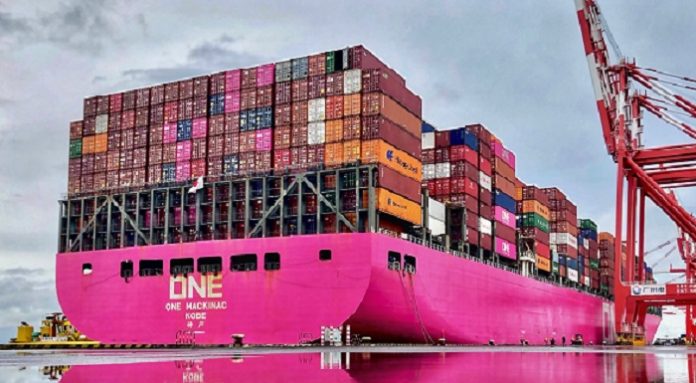
-
Earnings plunge 91% in Q1 as East-West supply-demand imbalance weighs down spot rates
-
Q1 profit shrinks nearly US$5 billion to just $513 million during the quarter
-
April-June global cargo demand on East-West routes contracts due to stagnant retail consumption in Europe and the US
Soft demand and a rate dip sank Ocean Network Express (ONE)’s profit 91% in its fiscal year 2023 first quarter, the Japanese container line said, attributing the double whammy to supply-demand imbalance on the East-West trades.
The phenomenon saw the Singapore-headquartered container line’s Q1 FY2023 profit shrink to US$513 million, a $4.99 billion year-on-year erosion from $5.5 billion in Q1 FY2022, the company said as it released its quarterly results on July 31.
ONE said revenue dived 58% to $3.77 billion during the quarter from $9.02 billion in Q1 FY2022. Earnings before interest, tax, depreciation and amortization (EBITDA) tanked 87% to $770 million from $5.86 billion in Q1 FY2022 on weak demand for shipping services that reflected a slowdown in the global economy.
Earnings before interest and tax (EBIT) plummeted 93% to $386 million, from $5.56 billion in Q1 FY2022.
Global cargo demand in April-June was significantly lower than in the same period last year. East-West routes suffered a fall in demand due to stagnant retail consumption in Europe and the US as a result of high interest rates and inflation, ONE said.
On the supply side, capacity increased as port congestion dissipated. There were no significant improvements in the softening supply-demand balance for the quarter under review.
As a result, freight rates remained significantly lower than Q1 FY2022, squeezing profit margins.
Cargo-wise, ONE reported a 4% drop in container throughput to 2.82 million twenty-foot equivalent units (TEUs) during the first quarter, from 2.94 million TEUs a year ago.
Cargo movements from Asia to North America in April-June fell 18% y-o-y due to a lack of progress in clearing inventories resulting from stagnant consumption caused by inflation and high interest rates.
Meanwhile, cargo movements from Asia to Europe in April-May was 9.1% higher than in the same period last year as shipments to the Mediterranean increased, particularly construction materials for earthquake-ravaged Turkiye.
Shipments to Northern Europe remained at the same level as the same period last year due to stagnant consumption caused by high interest rates.
ONE said that as port congestion subsided, vessel utilization recovered and substantial supply normalized, but cargo demand has not revived, thus the continued softening of supply and demand.
To improve its profitability and reduce vessel idling times, ONE expanded its port coverage to enhance sales capability.
It also reduced bunker consumption by slow steaming, deployed larger vessels on East-West trades ahead of schedule, adopted demand-driven service aggregation to improve operational efficiency while maintaining service quality, optimizing its container fleet capacity by returning leased containers and efficient container repositioning. One also increased special cargo shipments by strengthening special cargo sales.
ONE said all these measures would lead to maximized operational efficiencies through flexible deployment and the management of vessels and equipment.
The company said after the Covid-19 pandemic, the containership market is going through major changes, such as the aftermath of global supply chain disruption, changes in consumer behavior and shifts in trade patterns due to increasing international tensions.
ONE said it is making progress in adapting to these major changes, but further shifts in the market are expected as transport demand and trade patterns continue to alter, creating an uncertain outlook that is hard to predict.
RELATED READ: ONE orders 10 large container vessels




